If you’re a seafood lover and have never cooked clams at home, it may seem like a bit of a production to get at the relatively small amounts of meat contained within their shells.

Harvesting the meat from mollusks is a little more involved than obtaining the relatively big chunks of flesh that you can more easily be retrieved from other marine invertebrates, such as lobster and shrimp.
But, the process itself is a lot of fun, especially shared with family and friends, and when you do reach the treasure, it tastes twice as sweet because of your dedicated labors.
And once you’ve cooked up that first batch of shellfish, you’ll see just how easy it is to enjoy these delectable marine mollusks in your own kitchen. Let’s have a look at how to expertly deal with clams, and then we’ll go over five easy cooking methods that will have you preparing gourmet shellfish-infused dishes in no time.
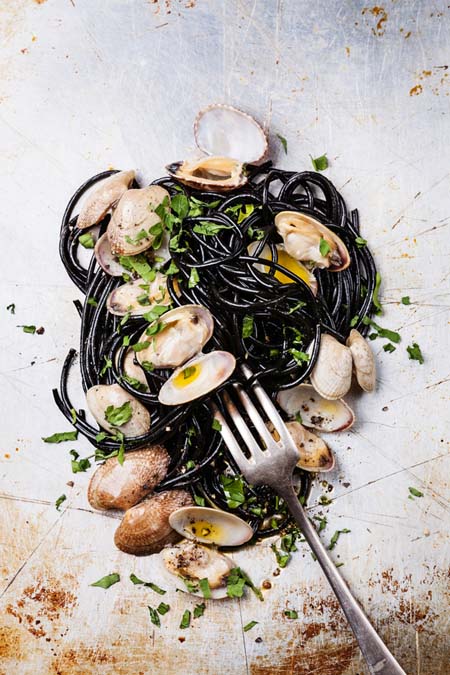
Where to Buy and How to Shop
At your fish market, ask the fishmonger for the day’s freshest catch. And when in doubt, give it the sniff test: clams, oysters and shellfish should smell like the ocean, and that’s all. Any overly “fish”’ smell means they’ve been sitting around too long, and are past their prime.
When purchasing, the shells of fresh clams, oysters and mussels need to be tightly closed, or just slightly ajar. And if they are open a little, they should quickly close when tapped lightly. If they don’t close, they’re not fresh and probably dead… meaning they’re not suitable for cooking or consumption.
Look for the National Shellfish Sanitation Program (NSSP) tags at your fish market, or the equivalent in your area (CSSP in Canada). This federal program regulates the commercial production of shellfish and harvesting from safe waters.
And, if you plan on gathering your own shellfish, always check with your local ocean and fishery department to ensure that the area you plan to harvest in is safe.
How to Store
Even though they may not look very lively, fresh shellfish are indeed alive and need to breathe. Sealing them in a plastic bag will smother them, so be sure to poke numerous holes in the bag with a wooden skewer.
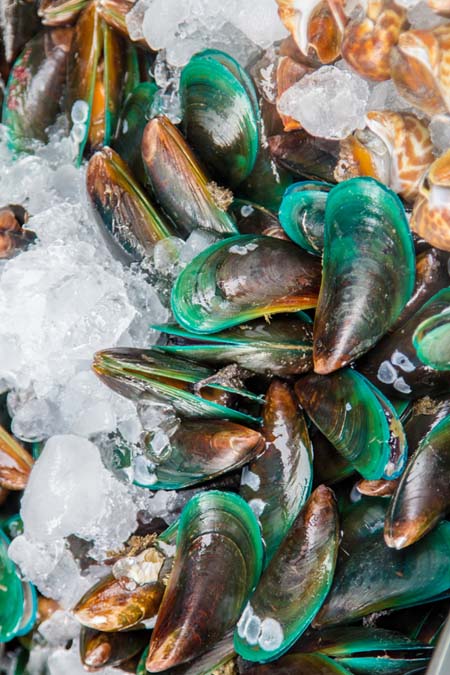
Or, a better alternative is to place the shellfish in a bowl half filled with crushed ice, then cover with a wet, clean towel. Put a bit more ice on top of the towel to keep it moist, and place the bowl in the coldest part of your fridge. Drain off any meltwater that collects in the bowl, and use within a day or two.
How to Prepare
If you collected your own clams, purge them of any sand in their stomachs as outlined in Step 1 of Steaming below. Then, with a stiff brush, give them a good scrub under cold running water. If any barnacles are growing on the shells, scrape them away with another shell and remove the tangled “beard” from mussels.
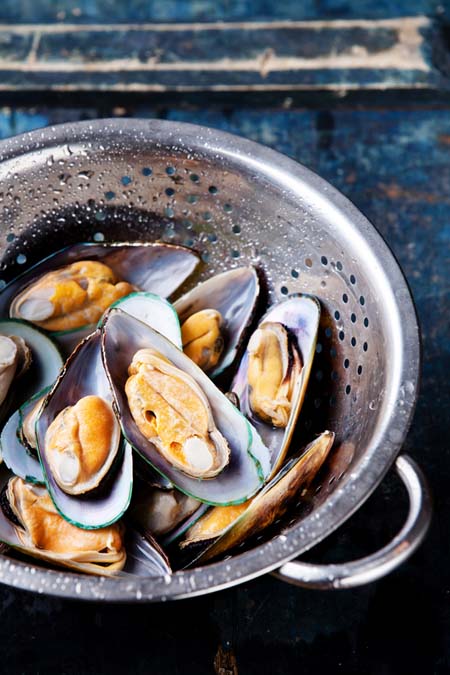
If any shells remain open when you give them a light tap, discard them. From here, proceed with your recipe directions.
How to Shuck
You can buy tubs of shucked meat at the market, but really, half the fun is in shucking them yourself.
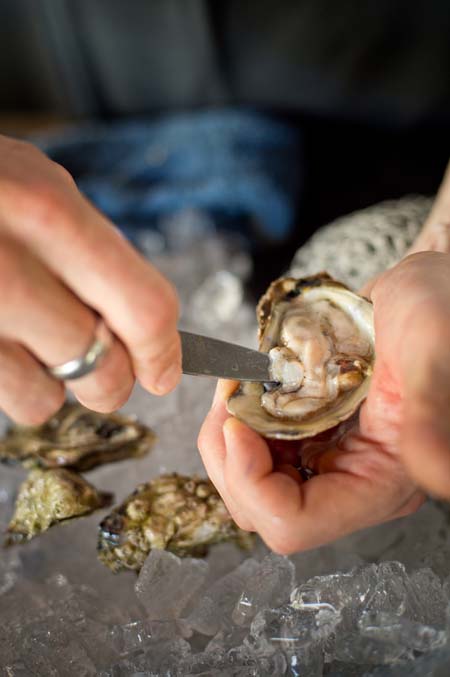
Here’s how:
Clams
For any dishes that require clam meat only – such as chowder, pasta sauce or battering and deep frying – you’ll need to shuck your clams first.
- Place the clams on a baking sheet and place in the freezer for five to ten minutes, so that the meat loosens from the shells a bit.
- Hold the shell so that the hinge is against the palm of your hand.
- Insert the edge of an oyster shucker’s knife, or a dull kitchen knife, between the top and bottom shells. Slide the blade all around the shell so that you cut right through the hinge, opening the shell.
- Slip the knife edge between the meat and the shell to remove.
- Proceed with your recipe directions.
Oysters
With their wavy “lips,” oysters require a bit more technique to shuck. But, it’s easy to get the hang of it. You’ll need an oyster knife and a tea towel, or an oyster shucker’s glove.
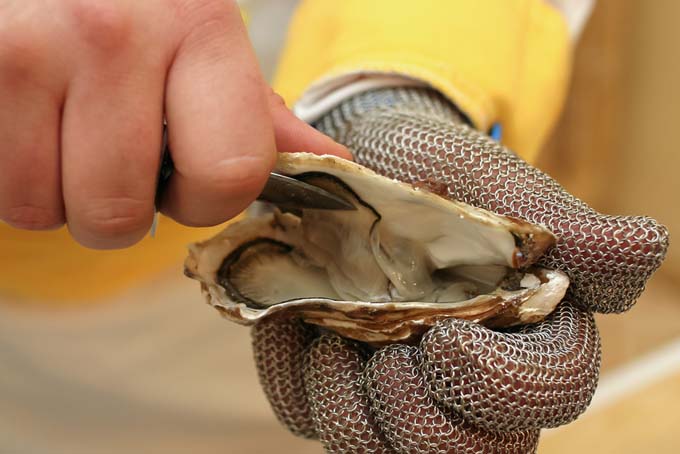
- Scrub and rinse your oysters under cold running water, discarding any that remain open after tapping.
- Place the oyster, flat-side up,* on a cutting board or non-slip work surface. Firmly grip the oyster with a tea towel, or wear a shucker’s glove, and leave the hinged end exposed.
- Place the tip of your oyster knife between the two shells, on either side of the hinge. Applying firm but gentle pressure, press inward. Twist and wiggle the knife tip with gentle pressure until the blade has made its way inside.
- Continue to twist and press the knife in until the top shell pops open. Try to retain the flavorful oyster liquor by keeping the shell level as you shuck.
- Clean any grit from your knife, then pry the shell open by inserting the knife tip in a couple of more spots, twisting it to release the shell completely. Run the knife edge along the inside of the upper shell to cut the muscle attaching it to the top shell.
- Run the knife edge along the inside of the lower shell, and gently cut the oyster free. Leave in the half shell until ready to use, then proceed as directed in your recipe.
Or, to serve raw, transfer the oyster in the bottom shell to a bed of crushed ice to keep it level and retain the juices. Serve immediately, with seafood cocktail sauce, lemon wedges or a dash of hot sauce.
* Note: Oysters are not composed of two equally shaped shells. The top shell is flat, while the bottom one where the oyster resides is cupped.
How to Steam
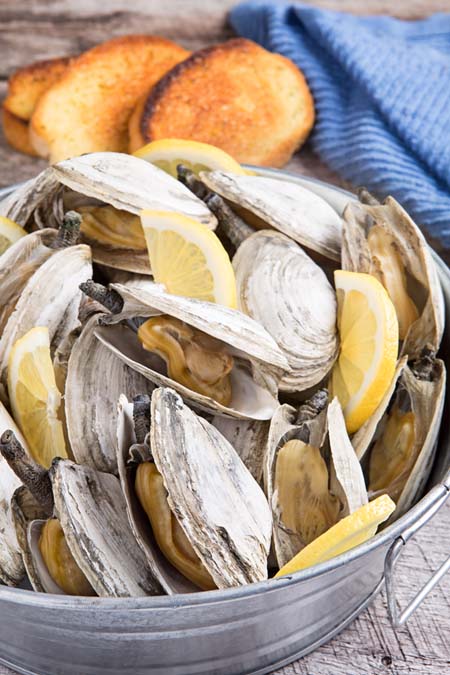
- To prepare the clams, soak in a bucket of ocean water to purge any sand from their stomachs. Or, make a weak brine with non-iodized salt (iodine will kill any mollusks) at the rate of 1/3 cup salt to one gallon water. Soak for 15-30 minutes.
- Under fresh running water, scrub shells with a stiff brush.
- Discard any specimens that stay open.
- Add clams to a large steaming kettle, adding ½ cup water for every pound, and bring to a boil.
- Or, for a tasty broth, replace one or two cups water with one or two cups white wine, garlic, bay leaves, parsley, thyme and the juice of one lemon – great for dunking with a nice crusty loaf.
- Steam for 2-10 minutes, depending on the species. Remove as they open, and give the unopened ones a little extra time… Some may be a bit stubborn about relaxing their shells.
How to Grill
Grilling shellfish is super easy. Clean and rinse as above, then place the shells on a grill pre-heated to medium high.
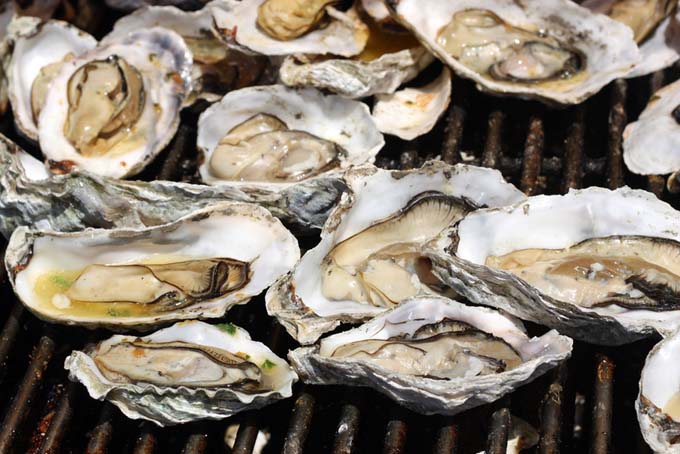
For oysters, place the bottom, rounded shell on the grill. Close the grill lid and cook 5-8 minutes, depending on their size or until they pop open. Remove with tongs, place in a serving dish and drizzle with herb butter. Serve with lemon wedges.
This herbed lemon butter (a variation of the recipe that was included in my Foods of the Pacific Northwest article) works well for clams, mussels or oysters:
- 1 stick unsalted butter at room temperature
- 1 tablespoon parsley minced
- 1 tablespoon fresh dill minced
- 1 tablespoon green onion the white and 1/3 of the greens, minced
- 1 tablespoon fresh lemon juice
- sea salt to taste
- fresh ground black pepper to taste
- In a small bowl, cream all ingredients together then chill until ready to use.
As always, I prefer freshly ground black pepper from a grinder to the prepackaged stuff.
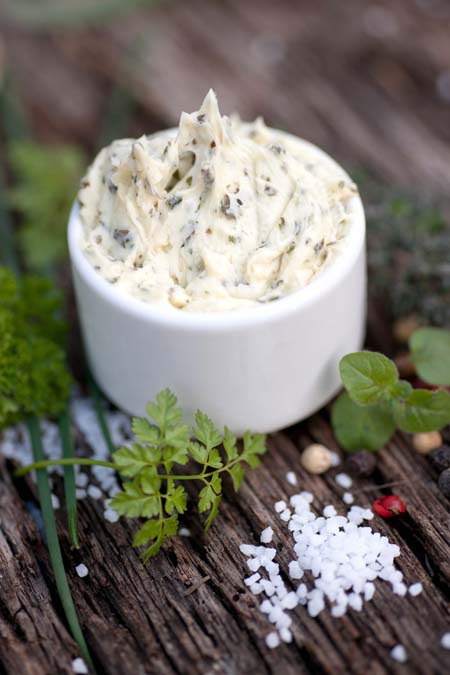
Baked Clams
Baked clams can be stuffed with an assortment of different ingredients, but they do particularly well with a bit of cheese, some breadcrumbs and herbs.

- Preheat the oven to 350°F and spray a baking sheet with cooking spray.
- Place the clams in a large bowl or bucket with enough water to cover them. Stir in one cup of cornmeal and 2 tablespoons of salt and let them soak while you prepare the stuffing. Soaking in cornmeal will help to purge the clams and loosen the shells.
- Prepare the stuffing – mix ingredients until they’re moist enough to form a mold, but not oozing liquid.
- Remove the shellfish from their cornmeal bath and pry them open with your fingers, or with a thin, dull knife wedged between the shells. Stuff the open shells with enough dressing to completely cover the meat.
- Position the stuffed clams on your prepared baking sheet and bake for 10-14 minutes, or until the stuffing turns golden brown.
- Remove from the oven and transfer to a serving platter.
Our recipe for Linguine with Baked Clams includes a tasty suggestion for making the dressing.
The Classic Clambake
You don’t need to go to the beach for a clambake, you can have one in your own backyard on the grill… minus the sand! And if you want to get really authentic, get some seaweed from your fish monger and put a layer on the bottom of your roasting pan.
- 2 pounds new potatoes quartered
- 1 pound spicy sausage sliced diagonally into ½” pieces
- 4 cobs of corn broken into thirds
- 5 pounds Littleneck clams 50 or so
- 2 pounds mixed steamer clams
- 2 pounds large prawns deveined with the tails still attached
- 2 lemons cut into eights
- 6 cloves garlic smashed
- 1 large sprig of thyme
- 2 sprigs of parsley
- 2 bay leaves
- teaspoon sea salt
- teaspoon fresh black pepper
- 2 cups white wine or beer
- 2 cups water
- butter for seasoning
- crusty French bread for dunking
- Place the seaweed (if using) in the bottom of your roaster, add your liquids, potatoes and sausage and cover. Close the grill lid and bring to a boil on the grill (medium high).
- Add the clams, lemons, garlic, herbs, salt and pepper. Stir well and cook for 10 – 15 minutes with the grill lid closed.
- Add the prawns and corn, cover and close the grill lid cooking for another 10 – 15 minutes or until all the shellfishs are open.
- Transfer to bowls with a generous helping of the broth, and serve with the herbed butter and crusty French bread.
Don't forget to check Foodal's guide if you're having problems deveining your prawn.
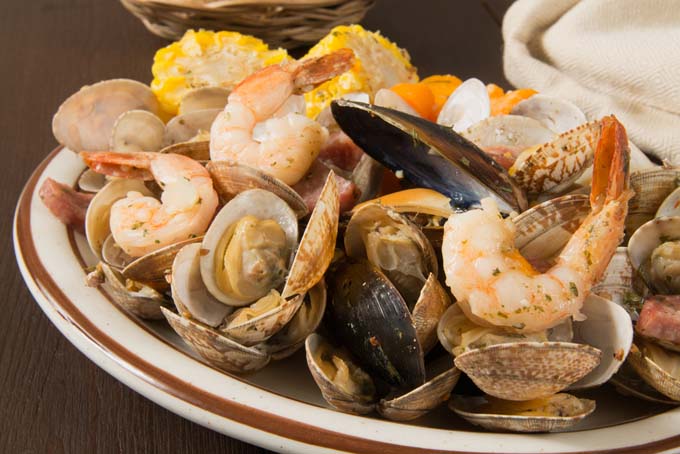
Having problems smashing your garlic? Try out a garlic press to make your life easier.
Bouillabaisse
The quintessential seafood stew, bouillabaisse is hearty, rich and delicious – and uses large amounts of seafood, including clams. If you can’t find the exact seafood or specific varieties called for in your recipe, improvise.
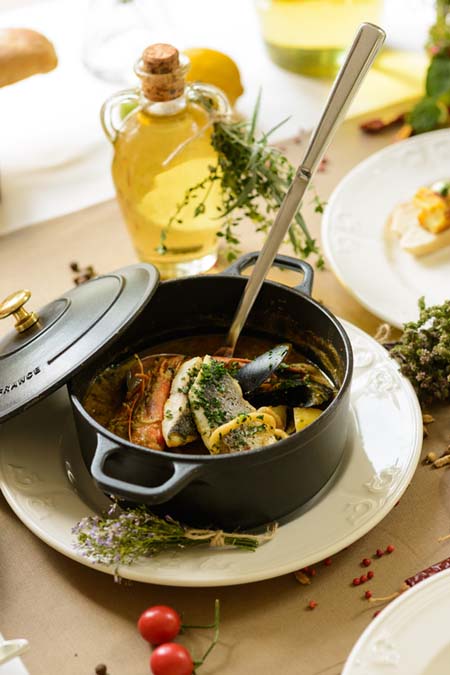
It’s a very flexible dish and the basics – potatoes, onions, carrots, tomatoes, fresh herbs, white fish, clams, prawns, mussels, and lobster – make it easily adaptable to the seafood available in your region. Please see our recipe for detailed instructions on preparing a delicious bouillabaisse.
Conclusion
Whatever your level of expertise in cooking shellfish, you can easily enjoy the delicious flavors of clams, oysters and mussels with just a few simple steps. Enjoy some this summer – you’ll be happy as a clam that you did!
About Lorna Kring
Recently retired as a costume specialist in the TV and film industry, Lorna now enjoys blogging on contemporary lifestyle themes. A bit daft about the garden, she’s particularly obsessed with organic tomatoes and herbs, and delights in breaking bread with family and friends.

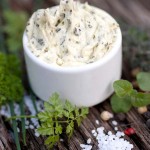
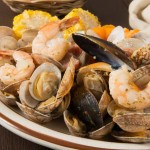

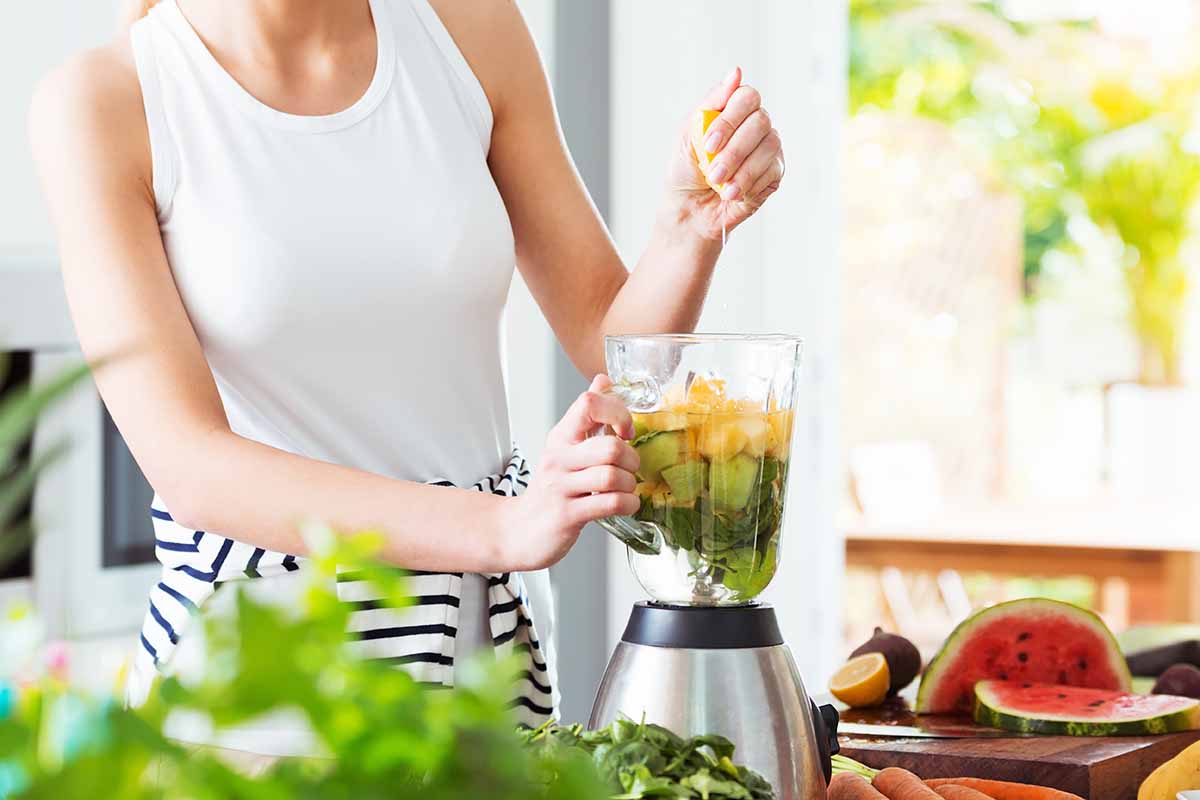

Growing up in New England, we at a lot of clams, scallops and lobster, and I still love them. It’s more difficult to obtain them where I live now, but, occasionally I’m able to feast on them, and these recipes will definitely help. It never occurred to me to grill shellfish, other than shrimp, on skewers. It sounds incredibly easy to grill oysters, which are abundant here, so I will try that.
I’m a coaster too, from the west one, and seafood is still a very important staple in my diet. In fact, I think I need some oyster for dinner tonight… you won’t believe how simple they are to grill Diane, or how yummy. Try serving with homemade tartar and a shot each of fresh lemon and hot sauce.
Oh man summertime grilling is here! All of these recipies are dynamite ideas for a double date on the grill in the backyard with some craft beers. I have been a server for quite sometime and having such an extensive layout for bouillabase is a treasure. For me white wine is a must with seafood and eating with fingers is even more fun. Great recipes!
Glad you enjoyed the post Brocker411, and you’re right, perfect for the backyard grill and some crafties…
I have always wanted to try cooking mussels in my house, but I fear it is a lot of work if Im the only one eating it. Im the only member of my family that enjoys the taste of shellfish.this might give me good reason to have friends over! Another problem I run into is finding fresh or suitable shellfish to cook. I live in Colorado and fresh shellfish is usually unattainable. How do I go about buying the shellfish from the supermarket while making sure they are somewhat fresh and will still taste delicious?
A shellfish blast and friends are a great combo…. you might have to try and find a good fish market in your region if the grocer can’t meet your needs, but speak to the manager of the fish department before going to far. They’re usually pretty good about answering questions regarding freshness or placing special orders.
Well I am just one state over, in the wrong direction if you are talking about being close to the sea, so I certainly feel your pain there. The good news is is that it is certainly possible to find good and fresh seafood, but it does cost more and is a little harder to find. You are also right on the excuse to have people over. It can be a lot of work if it is just you, but have a party and let everyone enjoy. Thanks for sharing.
It does seem like it takes a bit of work but I believe it would be worth it. I really like clams so I will try this. I never had them grilled but I also do not like grilled food that much. It is worth a try though. I want to try stuffed clams too. I had them from a store but I rather make it at home so that I can season it the way that I like. It may be more work but I know what I like so I think it will be better.
Shucking your own clams and oysters are a bit of work lachris15, but a lot of fun too. And definately worth the effort.
A shucker’s glove… How practical. I prefer to stab my hand on the hard-to-open oysters said no one ever!
Even though an oyster knife isn’t the sharpest in the drawer, it can still do some damage. And a little chain mail glove goes a long way when shucking a lot of oysters…
I really enjoy eating shellfish, but have never tried cooking them myself at home. I live right on the coast an have always wanted to collect muscles off the rocks as we have them close by. However, I can also buy them at the local markets. I am armed with so much more information since I read this article and feel more confident to give it a go.
I think most people are like that oraclemay, if you don’t know what to do you just don’t give it a try. Let us know how your mussels turn out!
I had no idea how easy shellfish was to cook. I was always led to believe that cooking and preparing “fruits de la mer” was a risky businesss, so have never actually tried it!
Thank you Lorna, for demystifying yet another food group!
As the saying goes, whoever first tried an oyster was a brave soul… and once you give cooking them or any shellfish a go, you’ll be hooked by the ease of it and the sublime flavors. Glad you liked the post missbishi.
This is a little bit embarrassing because I’m Asian but I’m allergic to most seafood. However, I still eat it anyway! So, this article was really helpful. I’m still a little unclear as to how to remove the sand. I’ve tried to cook selfish a bunch of time, but the recipe I had wasn’t very clear on how to get rid of the sand. If you have an awesome way of getting rid of sand, please tell me. I can’t stand another bowl of soup with sand in it anymore.
Thank you so much for this guide. I’m such a big fan of seafood in general but no one ever showed me how to cook all this and I’ve always get it wrong. The tips for buying and storing are really useful, I think I might have bought dead clams in the past and if they were still alive probably I killed them when I stored them in a sealed bag!
I think that I will go with the steaming option, it sounds so easy, and besides I think that adding some white wine and garlic would enhance their flavor.
When I get some practice I will definitely try the baked clams recipe, but first I need to make sure I succeed with the easiest method.
Thank you again for a great article!
You’re very welcome gaby! Seafood can be a bit tricky when you’re new to cooking it, so I’m glad you found the post to be helpful – no more smothered clams! Hope you enjoy your practice….
I have never tried clams or oysters before. I would have to try them at a restaurant before I decide to embark on all this hard work. I mean, what if I don’t like it.
Sampling before investing is a wise decision Zhen, not everyone is a fan of shellfish.
I enjoy ordering oysters and mussels when we go out to a fancy restaurant and I always enjoy them. I never knew how to go about buying fresh shellfish and cooking them. I have always had a fear of buying spoiled shellfish and that is why I don’t buy them. I feel comfortable after reading this article about what to look and smell for when buying shellfish.
Glad you found the post helpful buggs81 – when it doubt, let you nose inform your decision!
I never knew the difference between clams oysters and mussels; I think I have a working idea of the differences now. I’m a bit on the fence when it comes to making them though. Don’t get me wrong they look good, but it seems like the work I’d have to put into preparing them doesn’t make the meat yield worth it. There’s only a tiny bit of meat inside right? I think I’d be better off just buying canned clams. I’m not sure if they sell canned mussels(probably not) but if they do I’d pick that up as well. Unless of course the fresh ones taste way better than the canned ones. I know with some seafood the canned version isn’t that different from the fresh version.
It depends on what you’re using them for Neko Neko, canned is fine if you’re making a sauce or soup. And you’re right, they are a lot of work – but so worth it if you enjoy them!
I’ve eaten clams, oysters, and mussels a lot but I’ve never cooked any of it at home. After reading this article, I might try to cook some at home.
They’re very easy to make at home atlmom5, and it’s a fun process to cook up a mess!
Well I do consider myself a bit cursed, because I love seafood but I live about as far away from an ocean as is humanly possible. We can certainly get it here, but is really not that fresh most of the time and it is always very expensive. That said, it is usually something that we only enjoy a couple of times a year, but thank you for the tips because we do not to waste those few times we get. Thanks for sharing.
That is rough for a seafood lover rz, but glad you can use the tips for when you do partake…. thanks for your thoughts.